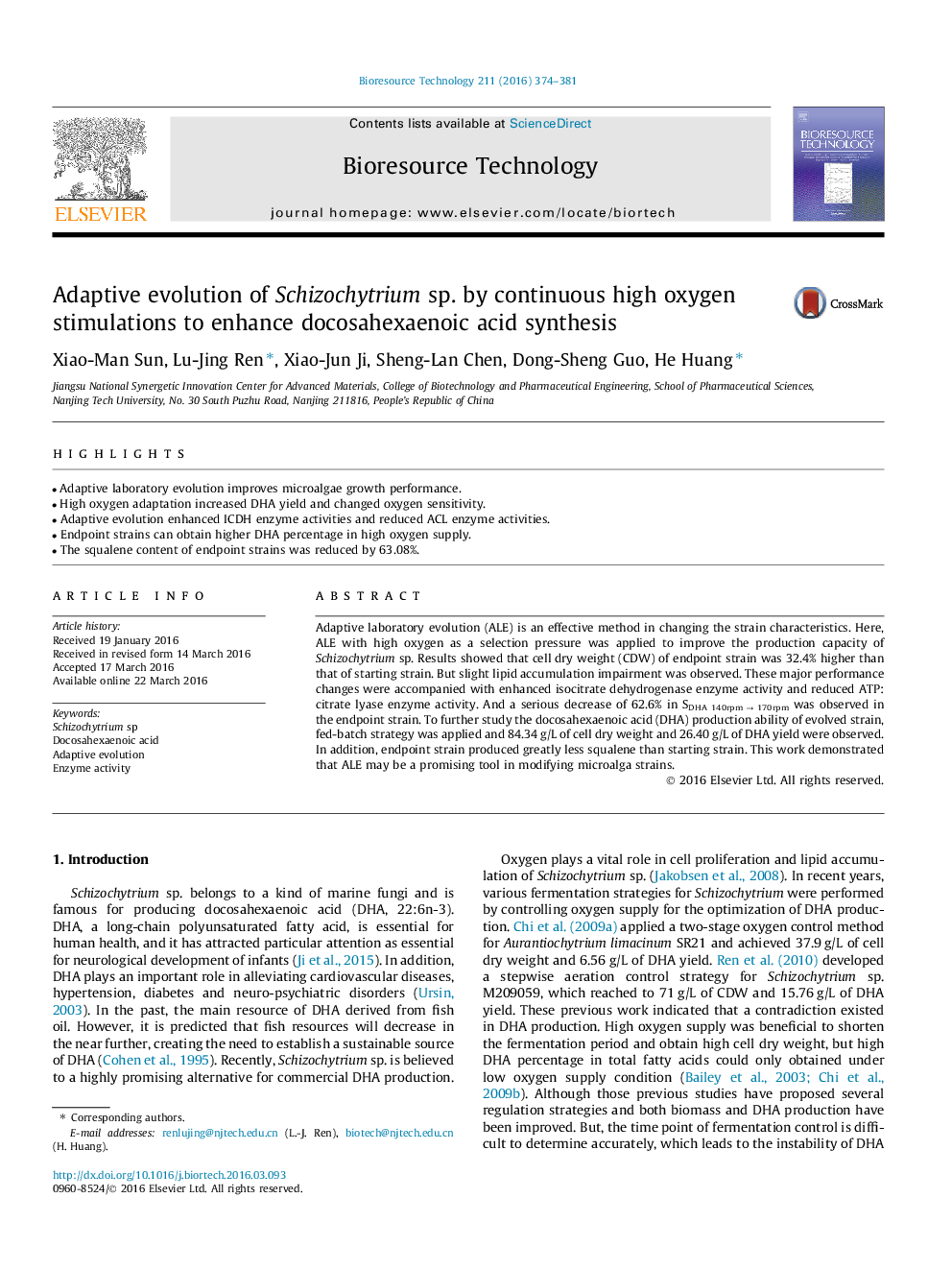| Article ID | Journal | Published Year | Pages | File Type |
|---|---|---|---|---|
| 7071921 | Bioresource Technology | 2016 | 8 Pages |
Abstract
Adaptive laboratory evolution (ALE) is an effective method in changing the strain characteristics. Here, ALE with high oxygen as a selection pressure was applied to improve the production capacity of Schizochytrium sp. Results showed that cell dry weight (CDW) of endpoint strain was 32.4% higher than that of starting strain. But slight lipid accumulation impairment was observed. These major performance changes were accompanied with enhanced isocitrate dehydrogenase enzyme activity and reduced ATP:citrate lyase enzyme activity. And a serious decrease of 62.6% in SDHA 140rpm â 170rpm was observed in the endpoint strain. To further study the docosahexaenoic acid (DHA) production ability of evolved strain, fed-batch strategy was applied and 84.34 g/L of cell dry weight and 26.40 g/L of DHA yield were observed. In addition, endpoint strain produced greatly less squalene than starting strain. This work demonstrated that ALE may be a promising tool in modifying microalga strains.
Related Topics
Physical Sciences and Engineering
Chemical Engineering
Process Chemistry and Technology
Authors
Xiao-Man Sun, Lu-Jing Ren, Xiao-Jun Ji, Sheng-Lan Chen, Dong-Sheng Guo, He Huang,
